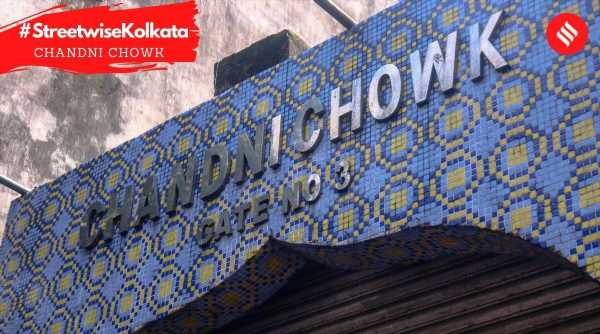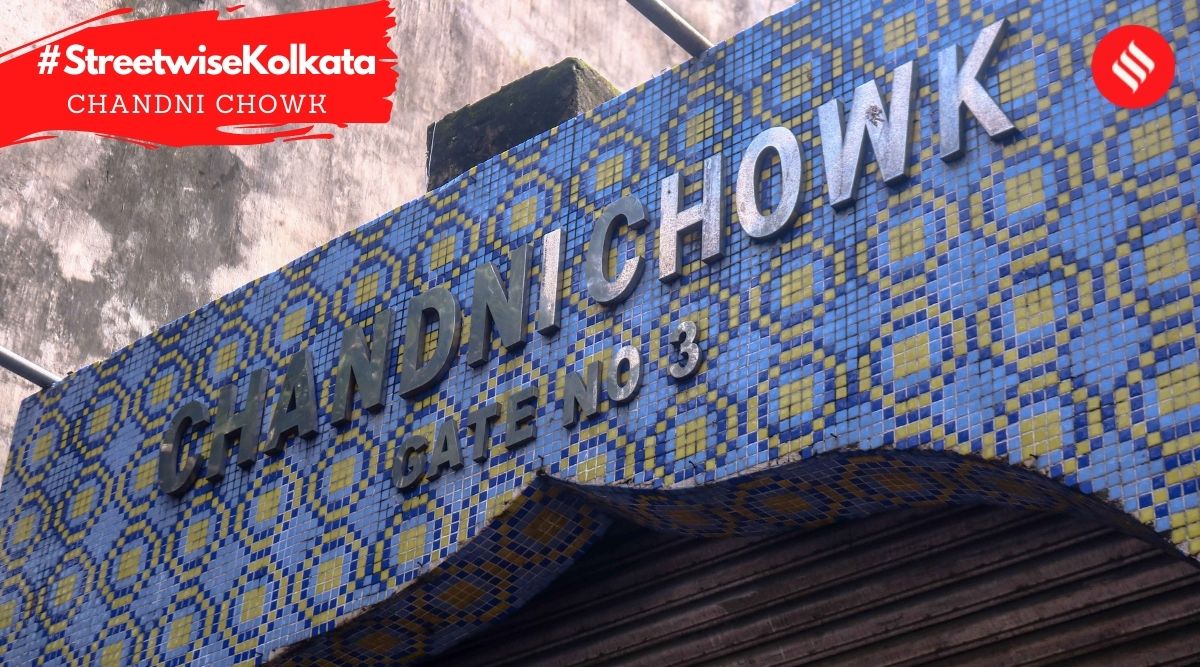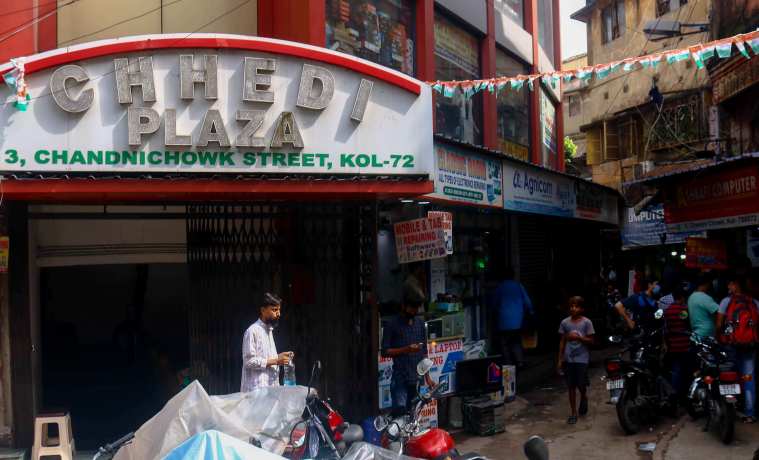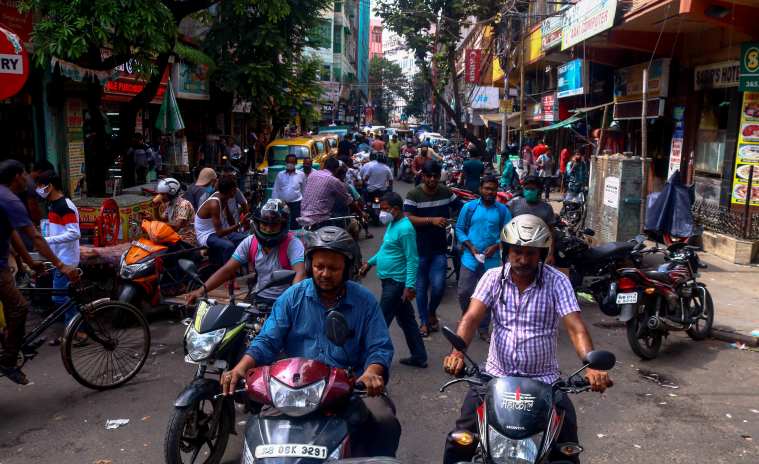Historical records of the city show that Chandni Chowk is among the oldest bazaars of the city, integral to its busy business district.
It is not quite clear when Chandni Chowk developed as a marketplace in Kolkata. But historical records of the city show that it is among the oldest bazaars of the city, integral to its busy business district. One of the earliest mentions of this bazaar can be found in A. Upjohn’s map of 1784 of Calcutta and its environs where it is identified as ‘Chandney Choke Bazar’, as well as three other names: ‘Chandney Bazaar ka rastah’, ‘Chandnee Choke’ and ‘Goreeamar Lane’.
A walk through this old marketplace today doesn’t really give much indication of its history or origins as one of Calcutta’s oldest bazaars and commercial neighbourhoods; so much has been modified and redeveloped as the city grew and developed. But archival records of the city provide some fascinating insight into the market itself and its etymology.
In his book ‘The good old days of honorable John Company: being curious reminiscences during the rule of the East India Company from 1600-1858’ (1907), W.H. Carey speculates that the word ‘Chandney’ may have been derived from the canopies or the semi-permanent roofs (chadna, in Bengali) above shops that had sprung up over the years.
A reading of Calcutta-born British author and film producer R.J. Minney’s ‘Round about Calcutta’ (1922) shows that at the time of writing this book, horse drawn carriages, called ‘gharries’ by the Europeans, were still a common mode of transport in the city.
Chronicling a scene that he recalls of Chandni Chowk, Minney writes, “Gharis wait outside shops, the horses hunched up in their shafts and harness, limp-legged, asleep. The drivers are asleep on the box and syces slumber behind. Water and rubbish on the pavements. The air is heavy with a fetid smell of hookah and food; paint, oil and cycles. In the shadow of the gold-tipped minarets women swathed in sheets clatter their slippered feet along the road. Children’s garments flutter in the wind from the line that dangles outside the open shop front. Shopkeepers glare expectantly but have too much self respect to solicit custom.”
Minney’s writings paint a vivid picture of pre-Independence Chandni Chowk, not altogether impossible to imagine. “A stout undressed Bengali sits on the mattressed floor, laid with white clean linen, fanning himself lazily. By his side stands a hookah with a long stiff spout. There is more bare body than shop. He probably does not depend on his shop for a living. An inquisitive passer-by, who peered in to gaze at his stock, was not even hailed as a possible customer,” he writes.
“Idle barbers sit by their doors hailing passers-by. The patrons of the Chandni bazaar, scowling, busy; bargaining, wrangling ; smiling, smirking. Cycle shops, camera shops, pigeon stalls for cigarettes and sherbet. Pavement vendors with their wares in their baskets, pavement barbers assisting the needy with their toilet; street hawkers who pause on the roadway at the hailing of a customer; quarrelsome ghari men lashing their whips at one another.”
Perhaps not much has changed in the structure and layout of the city’s oldest markets. In his book ‘Calcutta, Old and New’, H.E.A Cotton describes Chandni Chowk as a “labyrinth of ill-kept passages, lined with shops, in which may be found a wonderful collection of sundries, from a doornail to a silk dress.” He adds: “While shopping in modern New Market was more comfortable and reassuring, it lacked the adventurous spirit of shopping, getting favorite picks at pocket-friendly price by bargaining at your heart’s content. For that, one must essentially be guarded with sharp shopping skill. Besides, the shop-goers should be extra-cautious as Chandney has been apparently a notorious receptacle for all stolen goods, and such encourages theft by domestics”.
Kolkata Municipal Corporation records show that post 1937, the lanes of the marketplace began getting renamed with official notification being published in the editions of the Calcutta Gazette, but they do not explain why it was undertaken. The first such amendment occurred in February 1937, with Chandney Chowk 1st Lane being renamed as Chandney Approach.
In 1938, the KMC announced the renaming of Guriama Lane as Chandni Chowk Street. In his book ‘A History of Calcutta’s Streets’, historian P. Thakappan Nair writes that the marketplace was “a miserable area” and the corporation had to purchase land at 26 and 27 Chandney Chowk Street in 1907 to widen it. Nair does not provide details for why the KMC decided to expand the street’s width, but it may have been done to ease congestion of the marketplace.
The amendments made to accommodate a growing city and this marketplace over the years don’t seem to have helped. Hawkers and shopkeepers with semi-permanent structures continue to occupy every square inch of the space, with a discernible road and pavement having long disappeared. Over time, this marketplace, like its nearby neighbour New Market, has instilled such faith in the city’s residents through its reliability, that they are convinced there is nothing that the marketplace does not sell. Such is the belief that if objects can be found, fixed or repaired in ‘Chandni’, there is little chance there is another who can do the job in the city.
Source: Read Full Article





